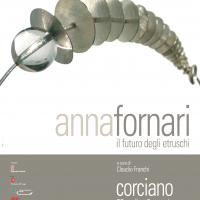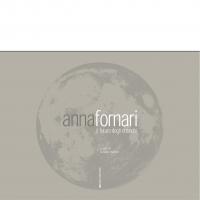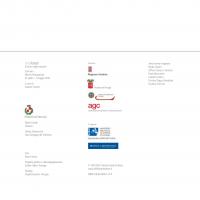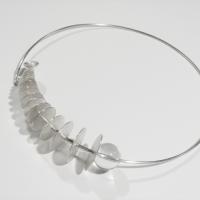gioielli d’arte artigianato design
2010 - Il futuro degli etruschi
Thursday, September 16, 2010 - 17:29Personal exhibition of Anna Fornari edited by Claudio Franchi
Municipal Antiquarium Museum of Corciano
The future of the Etruscans
The future of the Etruscans is a space-time narrative entrusted to a series of works by the goldsmith artist, with a latent function of ornament, of course, of protohistoric and Etruscan inspiration, but re-elaborated (not re-produced) with the specific intent of reviving taste, absolute forms, the ability to represent an original thought that does not renounce the value of history.Personal exhibition of Anna Fornari edited by Claudio Franchi Municipal Antiquarium Museum of Corciano The future of the Etruscans The future of the Etruscans is a space-time narrative entrusted to a series of works by the goldsmith artist, with a latent function of ornament, of course, of protohistoric and Etruscan inspiration, but re-elaborated (not re-produced) with the specific intent of reviving taste, absolute forms, the ability to represent an original thought that does not renounce the value of history.
The exhibition stems from the new concept of the Museum, according to which it is not only a testimony of the past, but is seen as a living space in evolution and a link between past, present and future.
CONFERENCE
Innovate while conserving
Conference and debate on the theme of recovering excellence in manual crafts, through the experience of the goldsmith's art
curated by Anna Fornari and Claudio Franchi
as part of the event SPRING OF CRAFTS
Municipal Antiquarium Corciano (PG) 30 April 2010 at 9.30
The theme of recovering the value of manual skills is increasingly present in cultural debates, with strong sociological and social connotations. In an era characterized by an increasingly widespread form of technological hysteria, which promises progress and gratification - both punctually disregarded - homo faber becomes the real innovative proposal to respond to the current state of crisis.
Technological achievements are an undoubted asset for the advancement of civilization, but when they become invasive, even in those areas where manual work constitutes an added value, the artisan culture shows itself to be an indispensable recovery for a society that seems to have lost sight of its specific experience of man...
The goldsmith arts have always been the outpost of technical experimentation, formal research, the construction of languages, the study of which by archaeologists has allowed an understanding of the uses and customs of the most remote societies in history.
Manual skill and formal experimentation can restore to modern man the lost dignity, the freedom long desired, the recovery of a series of values necessary to rebalance the imbalances of a society that risks a dangerous involution in the direction of "unlearning", also for the simplest processes of manual intervention.
In the Corciano Museum an idea-prototype is proposed that can stimulate appropriate reflections: the Museum as a place to recover the imagination, to know how to see, to return to the values of the culture of the past golden age; the Museum as a place of experimentation for the rewriting of new languages, habits and customs of "thinking" and "doing" for a humanity more aware of its potential
The theme of the rediscovery of a new quality, understood as a set of form, technique, logic, ability to communicate a story, testify to a tradition or a unique relationship with the territorial reality, arises as a logical evolution of the place of memory
SPEAKERS:
Nadia Ginetti Sindaco di Corciano
Paolo Bruschetti Soprintendenza per i Beni Archeologici dell'Umbria
Antonella Pinna Responsabile sezione Musei e Beni diffusi sul territorio Regione Umbria
Luca Iaia Referente Nazionale CNA Artistico e Tradizionale
Costante Brunori Presidente Onorario Federazione Orafi Confartigianato Imprese Perugia
Andrea Lombardo agc associazione gioiello contemporaneo



